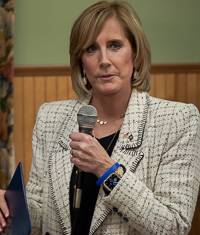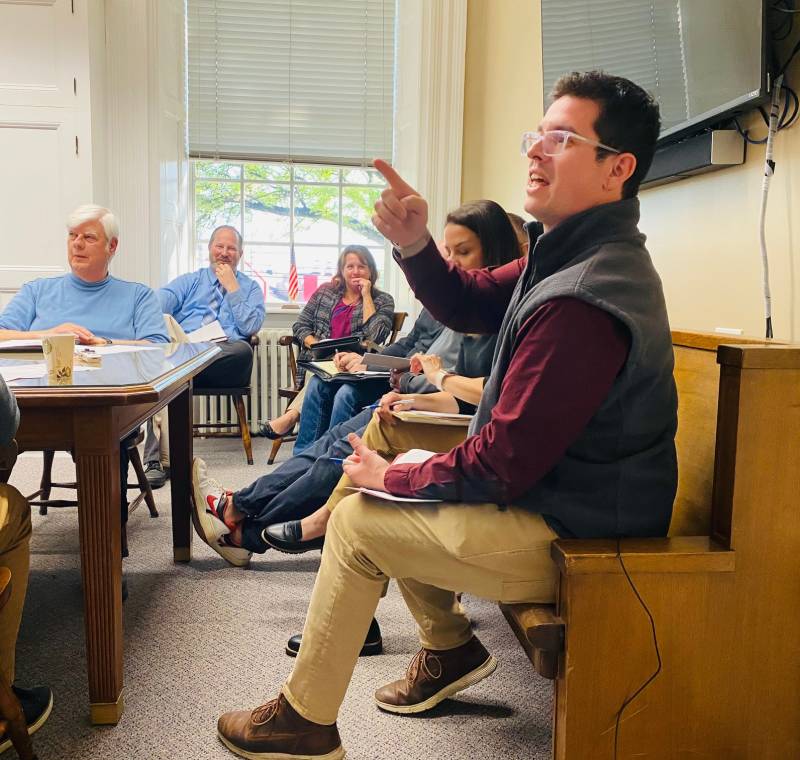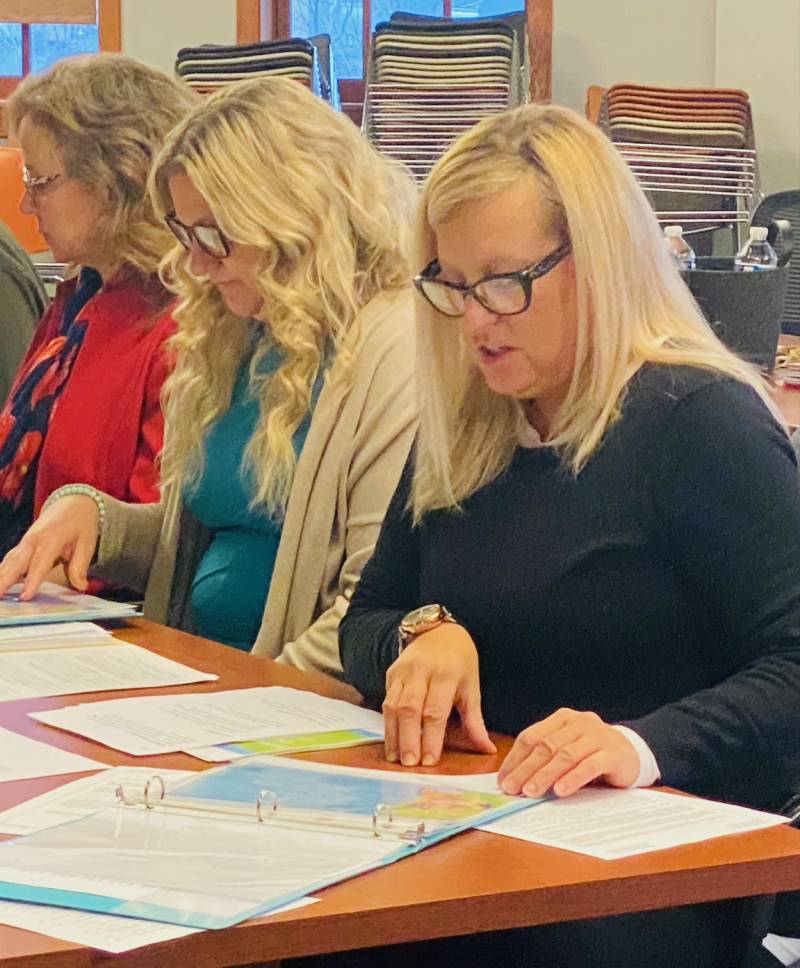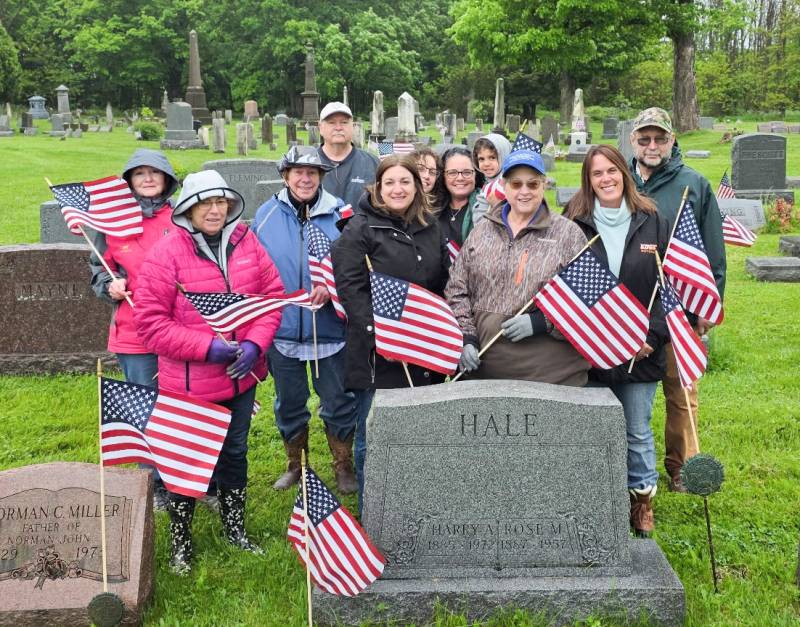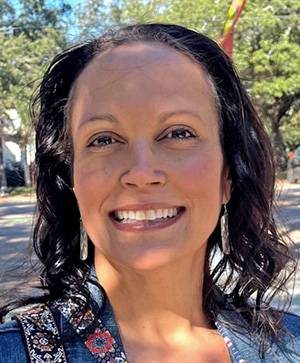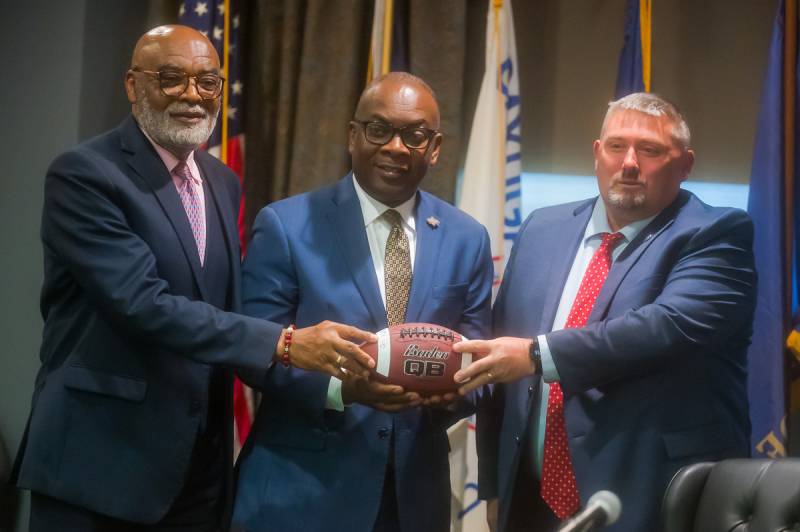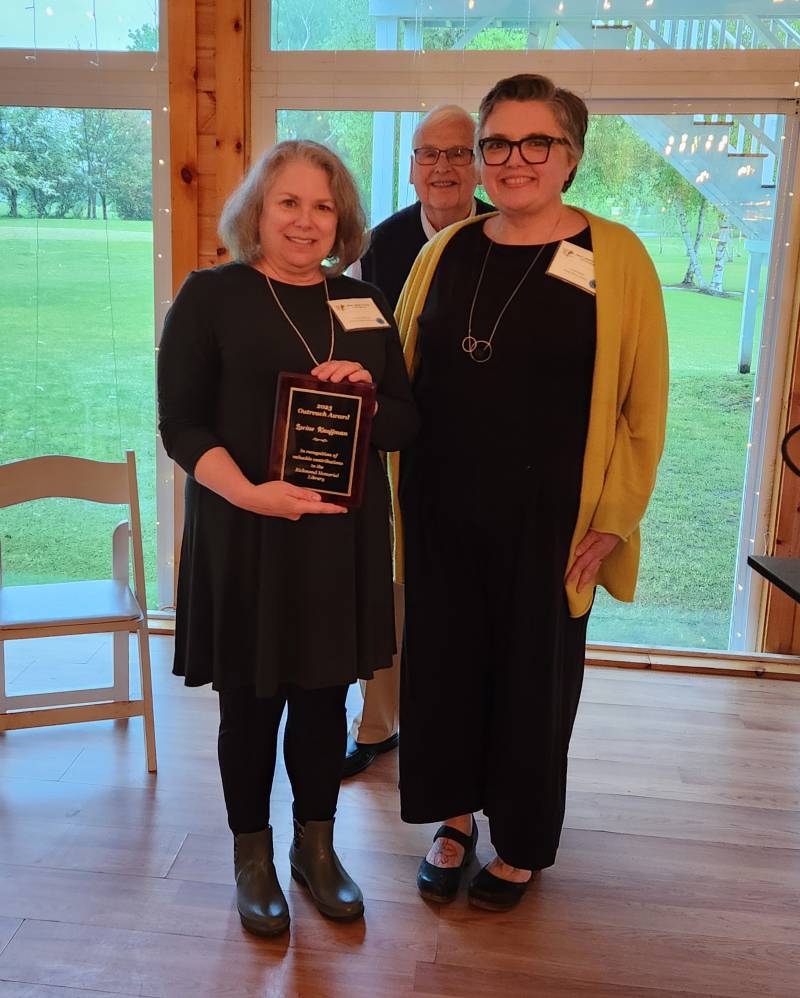Daniel R. Yates, 55, of Batavia, is charged with attempted robbery, 3rd degree, and attempted criminal possession of a weapon, 2nd degree. Yates allegedly attempted to take a Batavia police officer’s gun out of the holster while police were attempting to take him into custody on May 2. He was arraigned in City Court and released under the supervision of Genesee Justice.
Roman B. Warchol, 45, of Elm Street, Batavia, is charged with criminal possession of a controlled substance, 7th degree. Jennifer R. Warchol, 43, of Elm Street, Batavia, is charged with criminal possession of a controlled substance, 7th degree; operating a motor vehicle without insurance; operating a motor vehicle with a suspended registration; and operating a motor vehicle without an inspection certificate. Roman and Jennifer Warchol were arrested May 21 following a traffic stop, during which both were allegedly found in possession of narcotics. They were processed at the Genesee County Jail and released on appearance tickets.
Supreme N. Ervin, 26, of North Spruce Street, Batavia, is charged with public lewdness. Ervin was arrested May 20 after allegedly exposing private parts of his body while in a store on Veterans Memorial Drive in the Town of Batavia. He was processed at the Genesee County Jail and released on an appearance ticket.
Daquan J. Butler, 29, of Ocean Avenue, Brooklyn, is charged with possession of contraband. Butler is accused of possessing contraband inside the Genesee County Jail on May 16. He was issued an appearance ticket and will appear in Batavia Town Court on May 27.
Bernard L. Parnell, 35, of Batavia, is charged with petit larceny and obstructing governmental administration, 2nd degree. Parnell allegedly stole merchandise from Speedway and resisted police when they attempted to detain him. He was issued an appearance ticket and released. Earlier the same day, Parnell was arrested on Otis Street after he allegedly refused to leave a residence and allegedly punched another person. He was charged with criminal trespass, 2nd degree, and harassment, 2nd degree.
Anthony A. Bomasuto, 31, of Batavia, is charged with criminal contempt, 2nd degree, and aggravated family offense. Bomasuto is accused of being involved in an altercation with a person who has an order of protection against him on April 10. He was arraigned in City Court and remanded to the Genesee County Jail.
Kara B. Baker, 52, of Batavia, is charged with petit larceny. Baker is accused of stealing merchandise from Aldi on April 15. She was issued an appearance ticket and released.
Jerome W. Amesbury, 59, of Oakfield, is charged with criminal possession of a controlled substance, 7th degree. Amesbury was arrested on April 10 following a traffic stop on Jan. 10, when he was allegedly found in possession of narcotics. He was issued an appearance ticket and released.
Anthony G. Cicoria, 56, of Caledonia, is charged with DWI. Cicoria was arrested on April 10 following a traffic stop on West Main Street. He was arraigned in City Court and released.
Michael A. Fanizza, 31, of Batavia, is charged with burglary, 2nd degree, and criminal contempt, 2nd degree. Fanizza allegedly entered a residence illegally in violation of an order of protection. He was arraigned in CAP Court.
Donyel E. Walker, 26, of Batavia, is charged with burglary, 2nd degree, criminal contempt, 1st degree, and harassment, 2nd degree. Walker was arrested April 17 after allegedly violating an order of protection inside a residence on Hutchins Street. He was arraigned in CAP Court.
Thomas J. Preedom, 36, of Batavia, is charged with failure to register as a sex offender. Preedom is accused of failing to register his address as a level 2 sex offender. He was arraigned in City Court and remanded to the Genesee County Jail without bail.
Jacob W. Patterson, 29, of Batavia, is charged with criminal possession of a controlled substance, 7th degree. Patterson was allegedly found in possession of narcotics during an incident on State Street on April 15, 2024. He was issued an appearance ticket and released.
Christopher E. Tanner, 52, of Batavia, is charged with harassment, 2nd degree. Tanner allegedly struck another person during an altercation on State Street. He was issued an appearance ticket and released.
Kelly R. Seeler, 52, of Albion, is charged with criminal possession of a controlled substance, 7th degree. Seeler was allegedly found in possession of narcotics during a traffic stop on Pearl Street on Jan. 17. She was arraigned and released.
Benjamin M. Klotzbach, 34, of Batavia, is charged with unlawful imprisonment, 2nd degree, and harassment, 2nd degree. Klotzbach allegedly headbutted another person and prevented them from leaving a residence during an altercation on Elmwood Avenue. He was arraigned in City Court and released.
Johnny D. Vidal, 40, of Batavia, is charged with filing a false written statement. Vidal is accused of signing a written statement alleging that another person threatened him with a firearm. He was issued an appearance ticket and released.
Nathiel D. Wilson III, 19, of Batavia, and Ashton T. McWethy-Thornley, 18, of Batavia, are charged with criminal mischief, 3rd degree, and conspiracy, 5th degree. Wilson and McWethy-Thornley are accused of damaging a window on a house and a vehicle on State Street. Wilson was arraigned in City Court and remanded to the Genesee County Jail. McWethy-Thornley was arraigned and released.
Karen B. Armstrong, 48, of Batavia, and Ashlee S. Thomas, 28, of Batavia, are charged with endangering the welfare of a child. Armstrong and Thomas were charged following an altercation on Denio Street, where Armstrong allegedly kicked a 13-year-old girl and Thomas allegedly slapped another person who was holding a young child. Thomas was additionally charged with harassment, 2nd degree. Both were issued appearance tickets and released.
Andrew R. Del Gandio, 31, of Rochester, is charged with DWI. Del Gandio was arrested April 27 following a traffic stop on East Main Street. He was issued several traffic tickets and released.
James R. Briggs, 49, of Corning, was arrested April 30 on four warrants, including two bench warrants and two arrest warrants. He was arraigned in City Court and remanded to the Genesee County Jail.
Nankumar McLaulin, 32, of Hicksville, was arrested April 24 on a warrant. McLaulin allegedly failed to appear in court after being issued a misdemeanor traffic ticket in December 2023. He turned himself in, was arraigned in City Court, and released.
John W. Biaselli, 56, of Batavia, was arrested April 24 on a warrant. Biaselli was initially charged with petit larceny after allegedly stealing merchandise from Dollar General on Feb. 28. The warrant was issued after he failed to appear in court. He was arraigned in City Court and released.
Shelby L. Fryer, 29, of Batavia, was arrested April 24 on a bench warrant. Fryer was initially charged with criminal possession of a controlled substance, 7th degree, following a traffic stop on Dec. 17, 2024. Fryer was arraigned in City Court and released.
Nicole Granger, 34, of Batavia, is charged with offering a false instrument for filing, grand larceny, 3rd degree, and three counts of forgery, 1st degree. Granger is accused of failing to report that the biological father of her child was residing in the home and earning wages, and of forging three documents related to her rental payments. As a result, she allegedly received $6,426 in SNAP benefits she was not entitled to. Granger was arraigned in Batavia Town Court and released on her own recognizance.
Nicole Sprung, 39, of Le Roy, is charged with forgery, 1st degree, welfare fraud, 4th degree, and grand larceny, 4th degree. Sprung is accused of failing to report that the biological father of her child was living in the home and earning wages, and of forging a neighbor’s signature attesting that he was not in the home. She allegedly received $2,641 in SNAP benefits she was not entitled to. Sprung was arraigned in Batavia Town Court and released on her own recognizance.
Cheryl Ditzel, 61, of Batavia, is charged with welfare fraud, 4th degree. Ditzel is accused of failing to report monies being deposited into a bank account she had access to, resulting in her allegedly receiving $2,435 in SNAP benefits she was not entitled to. She was arraigned in Batavia Town Court and released on her own recognizance.
Jacqueline Sogunro-Pitan, 44, of Batavia, is charged with welfare fraud, 4th degree. She is accused of failing to report wages she was earning at Walmart and, as a result, receiving $2,304 in SNAP benefits she was not entitled to. She was arraigned in Batavia Town Court and released on her own recognizance.
Erica E. Cullen, 34, of Bank Street Road, Elba, is charged with offering a false instrument for filing, 1st degree; welfare fraud, 3rd degree; and grand larceny, 3rd degree. Cullen is accused of receiving $3,138 in SNAP benefits she was not entitled to. She was arrested following an investigation by the Department of Social Services and arraigned in Batavia Town Court on May 22, where she was released on her own recognizance.
Brandon Gerald Starkweather, 33, no permanent address, is charged with criminal contempt, 1st degree. Starkweather is accused of striking another person who had an active stay-away order of protection against him. He was held for arraignment following his arrest on May 22.
Davon H. Patton, 39, of Buffalo, is charged with criminal possession of stolen property, 4th degree. Patton was allegedly found operating a stolen vehicle on Oak Street on May 7. He was issued an appearance ticket and released.
Brian M. Raphael, 37, of Batavia, is charged with criminal possession of a weapon, 3rd degree. Raphael was allegedly found in possession of a bludgeon, specifically a club with barbed wire wrapped around it, on May 7. He was arraigned in City Court and released.
Joseph M. Tornabene, 33, of Buffalo, is charged with aggravated family offense and criminal contempt, 2nd degree. Tornabene allegedly violated an order of protection by being at the residence of a protected party on April 30. He was arraigned in City Court and remanded to the Genesee County Jail.
Marissa A. McGill, 39, of Batavia, is charged with endangering the welfare of a child and circumventing an interlock device. McGill allegedly had a child blow into her vehicle’s interlock device and left her children unattended for an extended period of time on May 9. She was issued appearance tickets and released.
Michael J. Cutitta, 40, of Batavia, is charged with menacing, 3rd degree. Cutitta allegedly threatened to kill another person on May 10. He was arraigned in CAP Court and released.
Colleen M. Hutchinson, 50, of Batavia, is charged with criminal possession of a controlled substance, 7th degree, and criminal use of drug paraphernalia, 2nd degree. Hutchinson was allegedly found in possession of narcotics and drug paraphernalia during a traffic stop on Ellicott Avenue on Feb. 19. She was issued appearance tickets and released.
Justin T. Gladney, 36, of Batavia, is charged with criminal possession of a controlled substance, 7th degree. Gladney was allegedly found in possession of narcotics on West Main Street on Aug. 1, 2024. He was issued an appearance ticket at the Genesee County Jail, where he is currently incarcerated on a separate matter.
Kaila I. Tidd, 40, of Batavia, is charged with criminal contempt, 2nd degree, and endangering the welfare of a child. Tidd allegedly allowed a sex offender to be at her residence around her children, in violation of an order of protection, on May 1. She was arraigned in City Court and released on her own recognizance.
Edward J. Ludwig, 62, of Alden, is charged with criminal possession of a controlled substance, 7th degree. Ludwig was allegedly found in possession of narcotics during a traffic stop on Jan. 17. He was arraigned in CAP Court and released.
Ricky A. Marsceill, 60, of Batavia, is charged with criminal possession of a controlled substance, 7th degree. Marsceill was allegedly found in possession of narcotics during a traffic stop on May 20, 2024. He was issued an appearance ticket and released.
Bill A. Thomas, 65, of Batavia, was arrested on three bench warrants, all stemming from previous trespass charges where he failed to appear in court. He was arraigned in CAP Court.
Michelle L. May, 50, of Batavia, is charged with harassment, 2nd degree. May allegedly had physical contact with another person during an altercation on East Main Street on May 3. She was arraigned in CAP Court.
